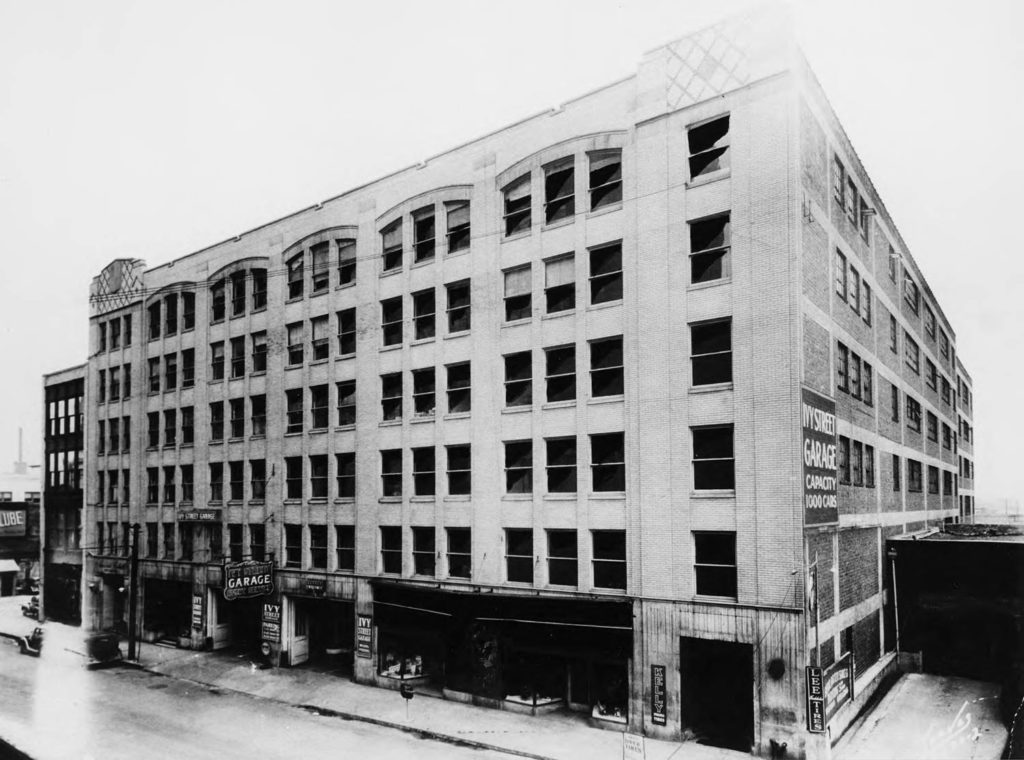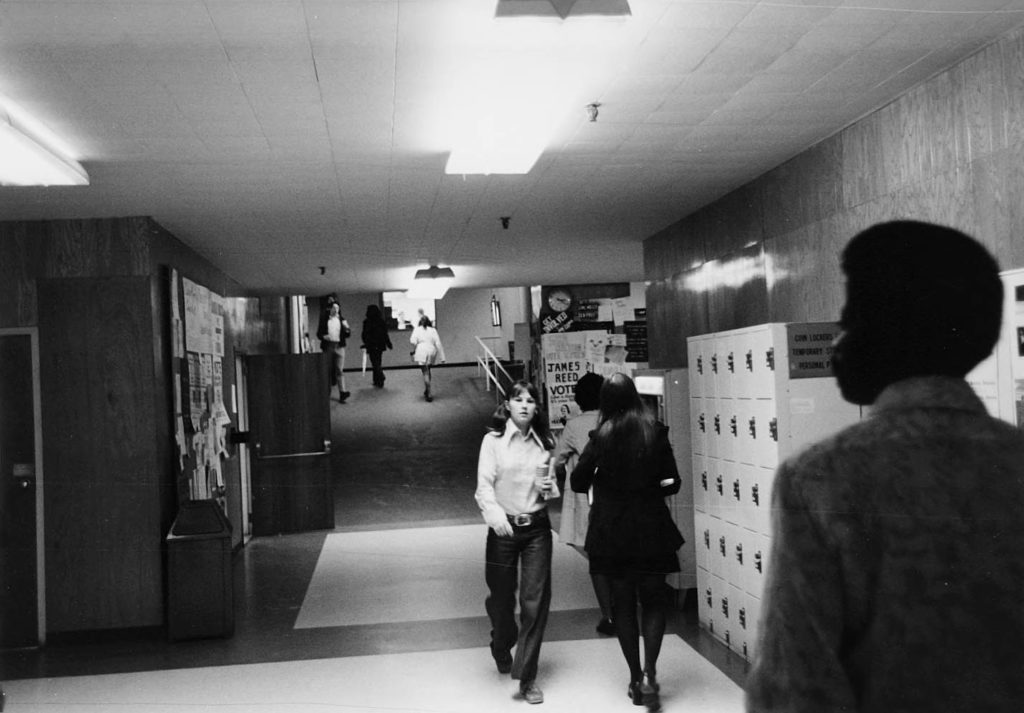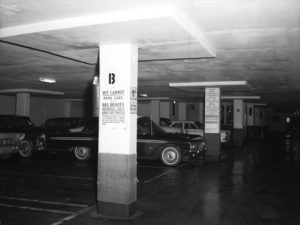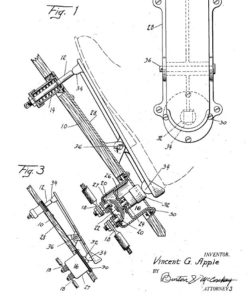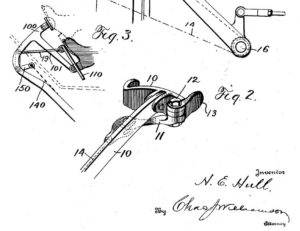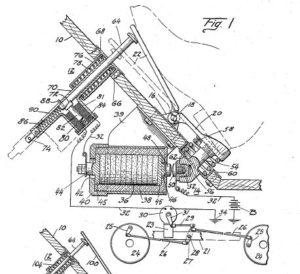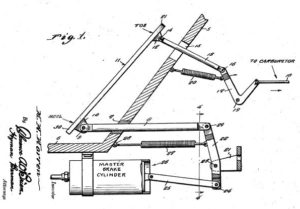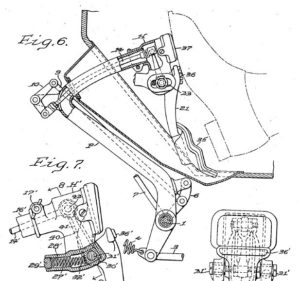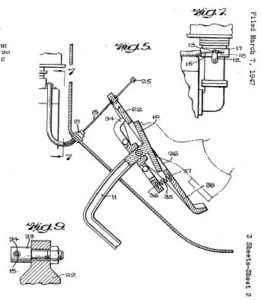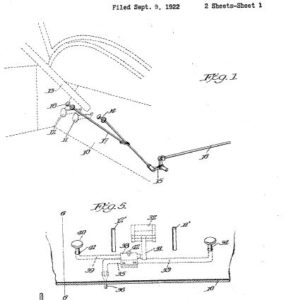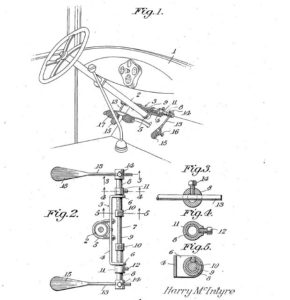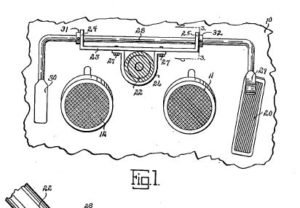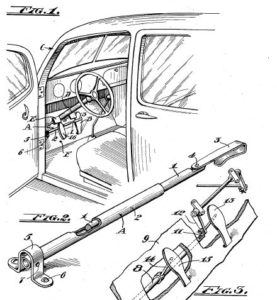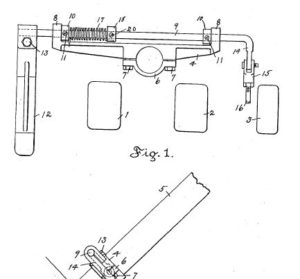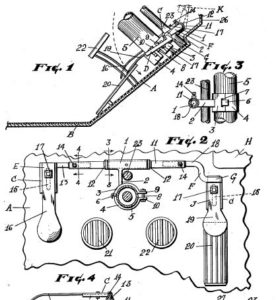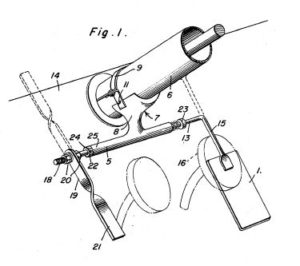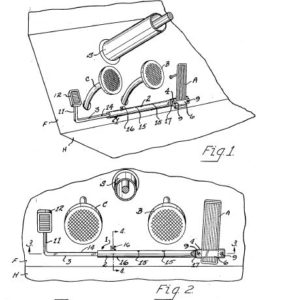When exploring an archive to answer one question, you sometimes come across information that raises new questions. In some cases, those questions are bizarre.
I was searching the Georgia State University Digital Collections for images of the Ivy Street Garage in downtown Atlanta. Built in 1925, the garage was later purchased as the first permanent home of the University System of Georgia Evening School, which would become Georgia State University in 1969.
Renamed Kell Hall in 1964, the building is scheduled for demolition in 2018, having served 72 years of students. In order to preserve the oddity of a parking garage converted into classrooms, the Library is undertaking a digital preservation project that will capture the experiences of walking down car ramps to get from one classroom to another.
In my search for images of Kell Hall, I came across photographs of the Roy Livingston Park & Shop. Patrons would park their cars and shop at local businesses, getting their parking check stamped when making purchases. According to the signs, it seems likely that parking attendants also offered valet service. But when I looked more closely at the signs, I found something very unusual.
- Roy Livingston’s Park & Shop on Pryor Street in Atlanta
- Inside the garage, showing signs with rules
One sign reads: “We cannot park cars with bad brakes, mechanical faults, double foot throttles”. The first two items make sense. Bad brakes and mechanical faults are trouble for valets. But what in the world is a “double foot throttle”? I grew up around antique cars, so I’ve seen a good number of different makes and models from the 1920s through the present. I’ve driven in a 1928 Ford Model A with a throttle control lever on the steering column, and seen Model T’s with no accelerator pedal whatsoever. But I had never heard of a “double foot throttle”.
In the 1920s and 30s, car manufacturers and enthusiasts were experimenting with different means of controlling automobiles. The standard set of controls now in most cars, with accelerator, brake, and clutch pedals from right to left, had not yet emerged as the clear winner of the competition. Google’s Patent Search returns hundreds of automotive innovations during the 1930s, including many for vehicle control mechanisms. When I started looking, I thought I had found the answer: maybe a “double foot throttle” was the same thing as a “double-acting throttle”?
A double-acting throttle was an idea that emerged in numerous forms in patents filed between 1930 and 1960 (see them here: one, two, three, four, five, six). In principle, all of the patents share a similar idea: combine braking and acceleration into one pedal to make controlling the vehicle easier. In some cases, the pedal could be tilted to accelerate or pushed to brake. In others, a sideways motion controlled throttle and pushing engaged the brake.
- This pedal has two independent sections. The toe controls acceleration, while the heel controls a button for braking.
- This pedal uses a sideways motion to engage the throttle, while the brakes are engaged with a forward pushing movement.
- This pedal also has two independent sections. The toe controls acceleration, while the heel controls a button for braking.
- This pedal tilts to provide acceleration and braking, requiring careful control of foot angle.
- This pedal uses the heel to accelerate, while pushing forward with the toe engages the brakes.
- This pedal engages the throttle with the heel and the brake with the toe, using a set of hinged plates.
Across the board, these patents argued that two separate pedals could cause fatigue or error. Interestingly, some of those same concerns are re-emerging today, as manufacturers seek to reduce driver error in emergency situations by rethinking the two-pedal layout.
Fortunately, being granted a patent doesn’t mean that an innovation is a good idea. Some of these designs would have been catastrophically difficult to master, especially when trying to tilt between acceleration and braking. Not to mention having to learn a new pedal layout with each new vehicle! If a “double foot throttle” was the same thing as a “double-action” or “double-acting” throttle, no parking garage would want attendants struggling to figure out new pedals and possibly crashing cars into one another when they failed. I thought I had found the bizarre answer to a strange question.
But then I found something else that was closer to the language used in the sign. In 1932, a patent was granted for a “double foot feed” system, whereby a driver can use either right or left foot to activate the accelerator. On further searching, I found eight (count them! one, two, three, four, five, six, seven, eight) different variations on that idea, patented from 1923 through 1953. I’m sure there were more that I haven’t found. For thirty years, people thought that operating an accelerator with either foot was a wise idea.
- 1923
- 1932
- 1937
- 1939
- 1939
- 1941
- 1950
- 1953
Most of the inventors who submitted the above patents argued that their innovations would save fatigue on long journeys. Although systems existed for regulating consistent vehicle speed, the cruise controls we know today didn’t emerge until mid-century. For early inventors, the easiest solution was to provide the ability to hold the accelerator with either foot.

This short article in Popular Mechanics from 1937 describes the benefit of a double-foot throttle adapter.
But as automakers began to standardize their vehicle pedals, more and more drivers became comfortable with using their right foot only for accelerating and braking and left foot for the clutch. The adapter described in the above article only made sense because most vehicles had three pedals arranged in the standard way.
It is easy to see how much trouble these systems would cause for a valet service. An unsuspecting valet steps on the furthest left pedal, thinking of engaging the clutch. In this car, however, that pedal is a secondary, left-foot throttle control, and the car lurches forward as the valet frantically attempts to locate the correct pedals. Even in the best case, damage likely ensues to the car and perhaps other customers’ vehicles also.
Sometimes wandering through an archive or collection can unearth unexpected curiosities. A curious sign caught my eye. An unknown phrase made me dig. What I discovered were automotive innovations that I had never before encountered. I also found that both combination pedals and right/left foot throttles are terrible ideas for valet service, and the parking garage was wise to prohibit them. Or else you might end up with this:
